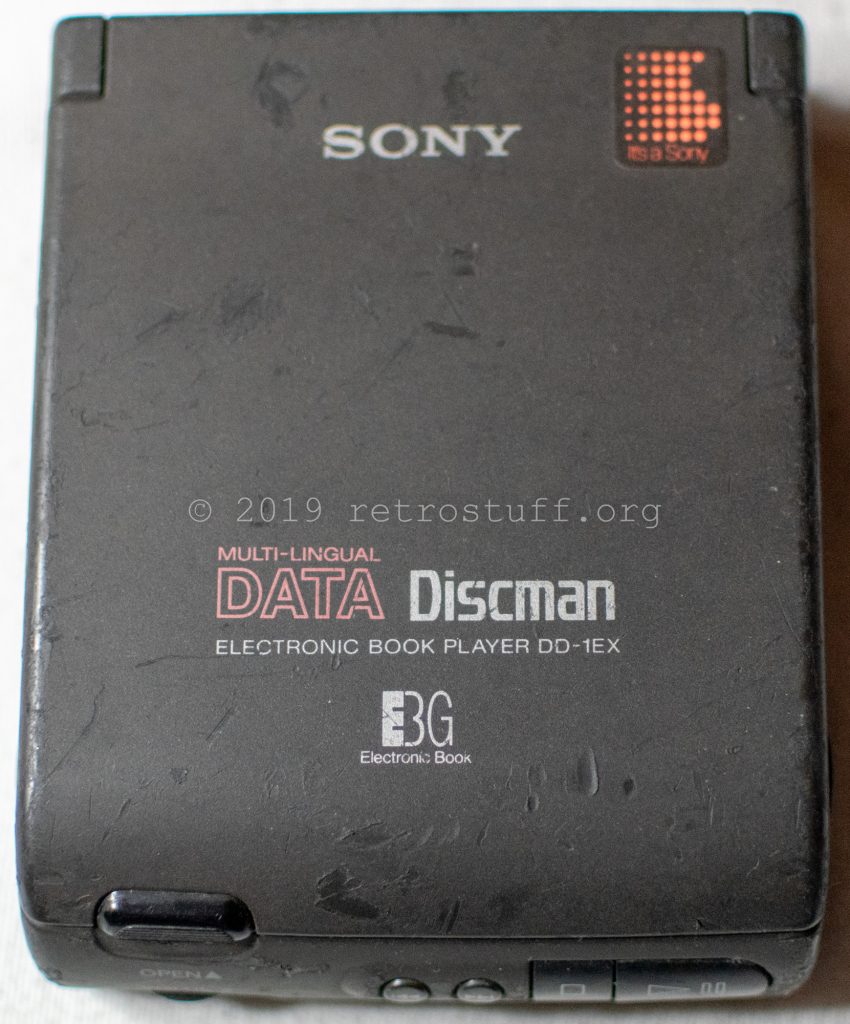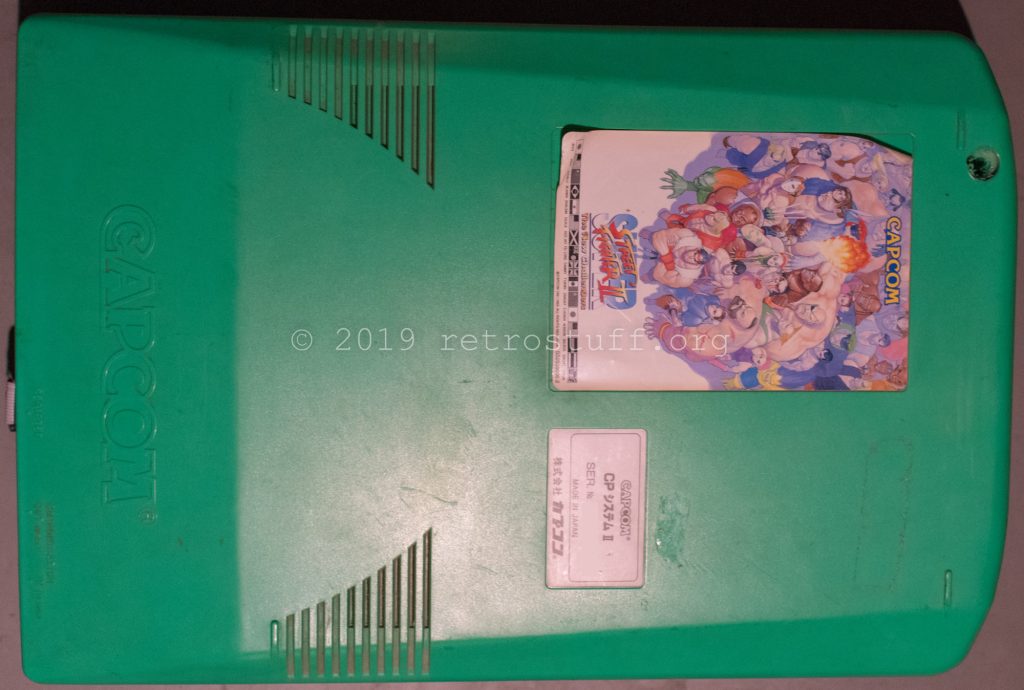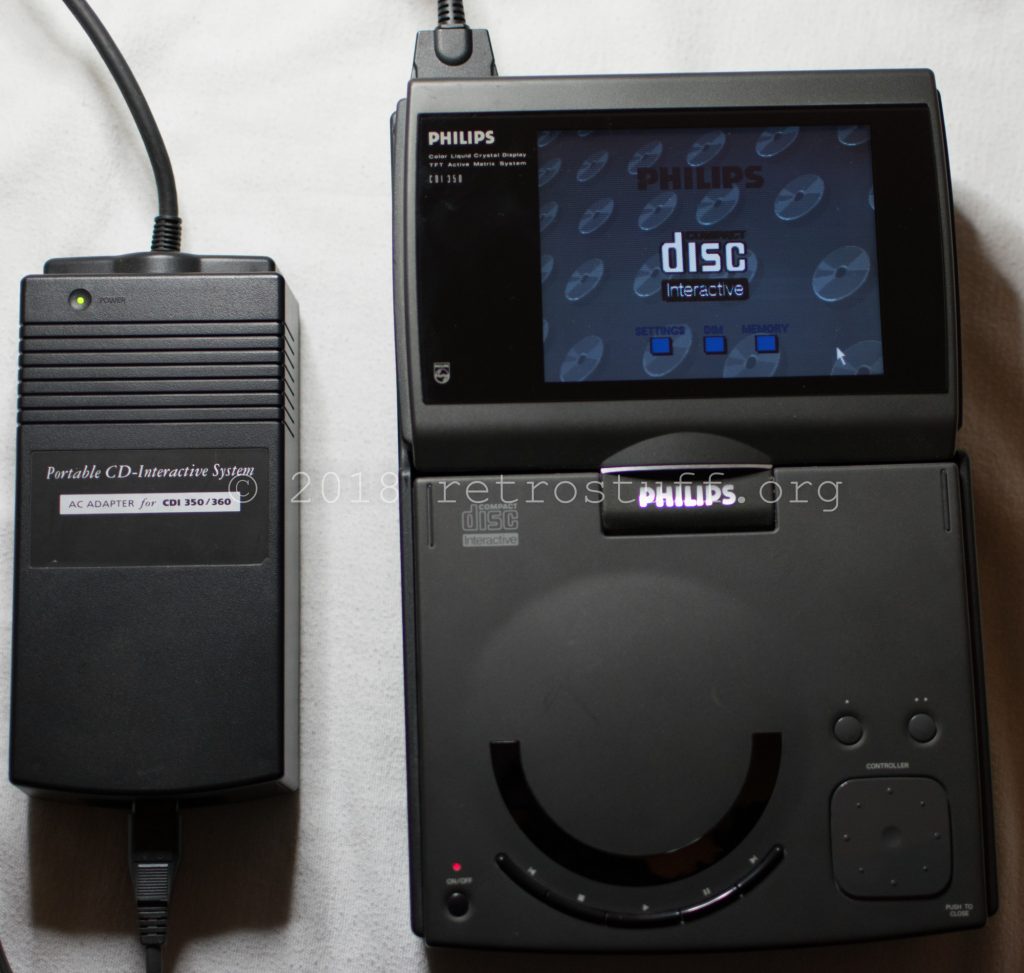This was an unplanned project. When I bought my first EBG disc for the Sega Saturn Electronic Book Operator, a Sony DD-1EX Data Discman came along with it. As it didn’t turn on, I took a closer look and found leaking capacitors and some stowaways.

Disassembly
This was an unplanned project. When I bought my first EBG disc for the Sega Saturn Electronic Book Operator, a Sony DD-1EX Data Discman came along with it. As it didn’t turn on, I took a closer look and found leaking capacitors and some stowaways.

After I had my first MVS at home, it didn’t take long until more arcade hardware followed. For example this CPS2. It looks shabby and needs some work, but it already has a Darksoft CPS2 Multi Kit installed.

When I bought a second-hand Sega Pico in 2015, I immediatly noticed that something must be wrong with it. I didn’t expect a lot of interactivity or gameplay, but at least it should let me draw something. It turned out that the pen was registering the position/movement and also made a clicking noise when pressed down, but nothing else happened. The error was quickly found and repaired (broken micro switch), but the photos have been waiting on my hard drive ever since. A short repair instruction was posted on the ASSEMblergames board in the following year, so I didn’t see the need to rush out an article. Well, here we go:
The label of the pen is missing and it seems that somebody tried to open it up before me:

This has arrived today from Ukraine: The new SD2SNES Mk.III aka SD2SNES Pro, designed by ikari_01 and manufactured by Krikzz.
Right now, it seems to have a bug when used in combination with a SuperCIC. As soon as the SuperCIC is enabled in the configuration, there is no picture and sync is lost (also, weird readings on the OSSC display). Upon switching the frequency, the LED of the console turns red and is stuck in that status. According to this thread, a firmware update is needed for one of the SuperCIC chips. I’m looking forward to see if this can be resolved through a SD2SNES firmware update. Otherwise, I’ll have to desolder and flash one of the SuperCIC chips.
Continue reading SD2SNES Mk.III / SD2SNES ProWhile doing my research for another project (finding a plug for the Philips CDI350 RGB in/out port), I came across an old IBM MIDI/Game port adapter. It is listed with P/N 29H9467 (FRU P/N 29H9269) and can be used with some models of the ThinkPad 760 series (760CD, 760ED, 760XD, and also 765D). What makes it so special is the plug. It is similar to the 26-pin external floppy connectors used by several laptop brands in the ’90s. While most of the external floppy drives used a 17 mm wide plug, this one is 20 mm wide. This JAE datasheet lists the plug as TX20A series connector, part number TX20A-26PH1-D2P1-D1.
Continue reading IBM ThinkPad 760 Series MIDI/Game Port AdapterThis repair was not planned at all and took place while I was waiting for the capacitors for my CDI350 to arrive. I was thinking about buying a SX-1 or SX-32 extension for my Amiga CD³², and was recommended to go for a much cheaper modern extension: the TF328.
The TF328 needs a Kickstart 3.1 rev 40.60 to access the CF card, as there is no IDE driver in the earlier revision 40.56. Upon checking my CD³², there was not only the smell of electrolyte, there was also visible damage caused by leaking capacitors.
Continue reading Amiga CD³² Recap and TF328Last year I began to disassemble and repair one of my Philips CDI350 players. This has been covered in the article Philips CDI350 Repair Part 1.
After that, it took me a while to make a list of all capacitors, to find replacement parts (the original Philips part numbers are not useful anymore) and to find shops that had them on stock.
The scanned CDI350 service manual on ICDIA is missing the pages 78 and 79, which contain the parts lists of the servo and power sections. I found some of the missing parts in the CDI360 service manual and some by comparing the removed parts with both service manuals.
Two portable Philips CD-i players (CDI350) came into my care last month. They show common errors, such as not loading any CDs and not storing any settings, and also flickering screens. Let’s have a look inside and repair them.
The screen becomes normal after a while so that I can navigate.

What if your favourite CD-i game refuses to start or shows some weird behaviour? Most likely, this is to blame on a defective Timekeeper and/or laser. This topic has been covered years ago. There is another problem with the game The 7th Guest, which is completely unrelated to the problems mentioned above though.
Earth Command isn’t my favourite game. It makes some fun for a while, to tamper with the various settings and eventually watch the world burn, but it never got me hooked for a long time.
Then the reports of some people caught my attention. Some had trouble starting the game, as the screen just turned black after the intro, while others had no problems with the game at all. There was no common denominator to pin down the problem, as all the CD-i players they’ve used were of different revisions and generations.
The PSIO development cartridge, that I had preordered in June 2017, finally arrived this month. The whole package is very well made and looks almost like a genuine Sony PlayStation peripheral. The cartridge requires a modification before use, the PSIO switch board installation. The switch board detects the presence of the cartridge and switches the signals from the ODD to the parallel port.